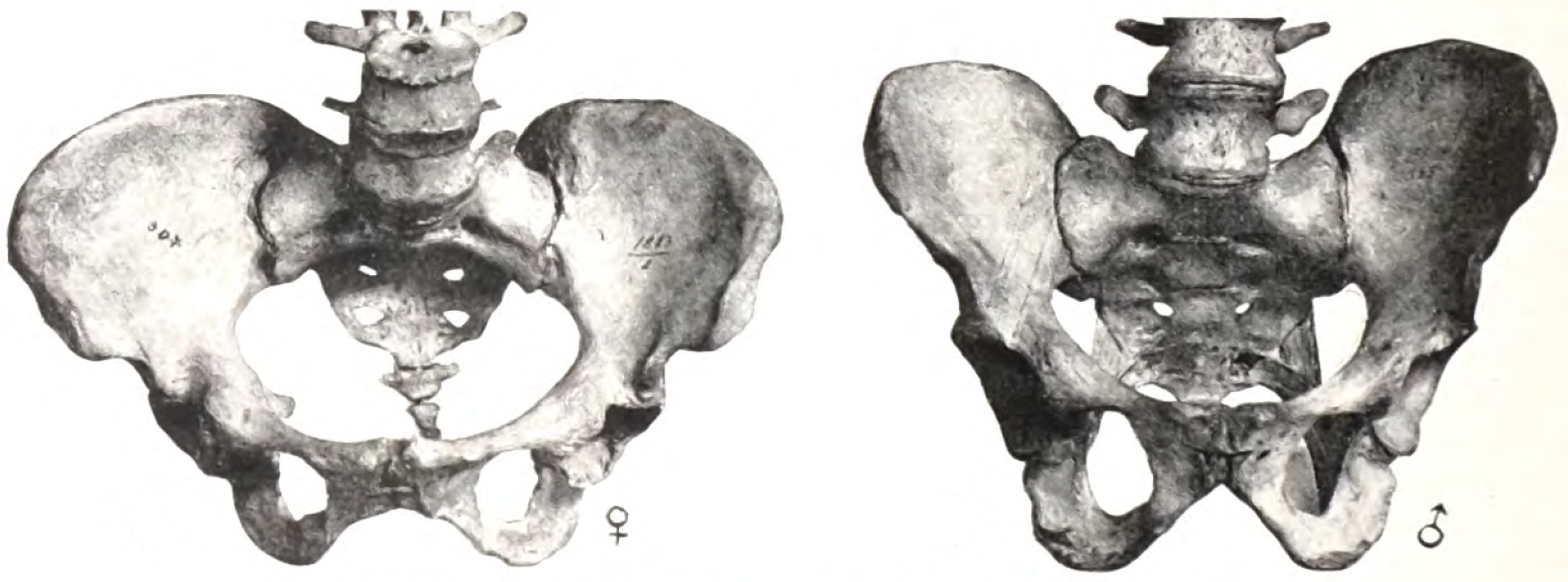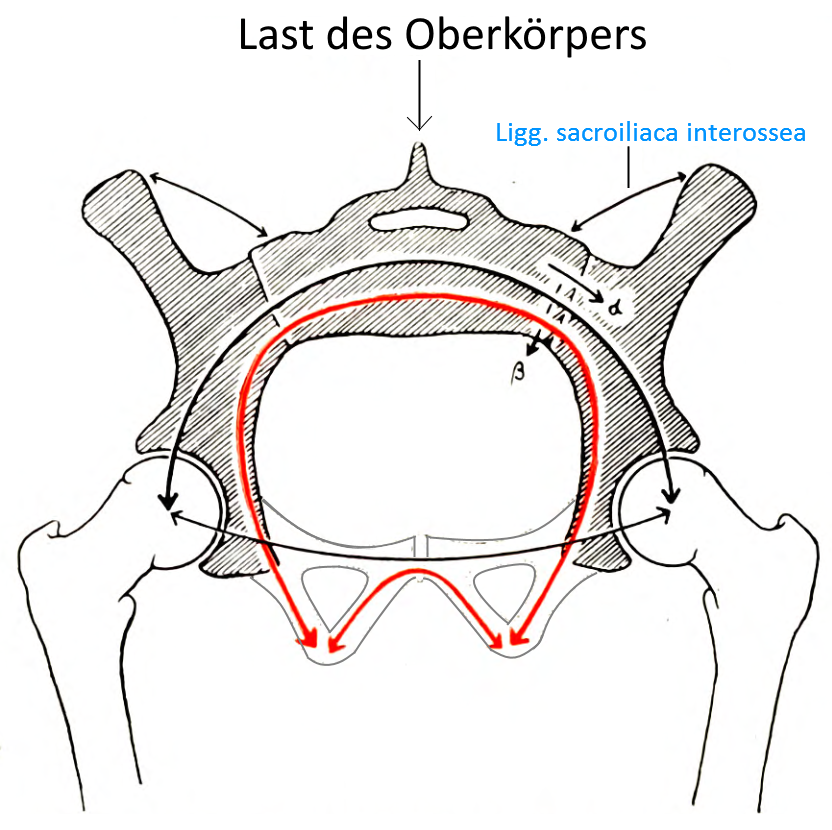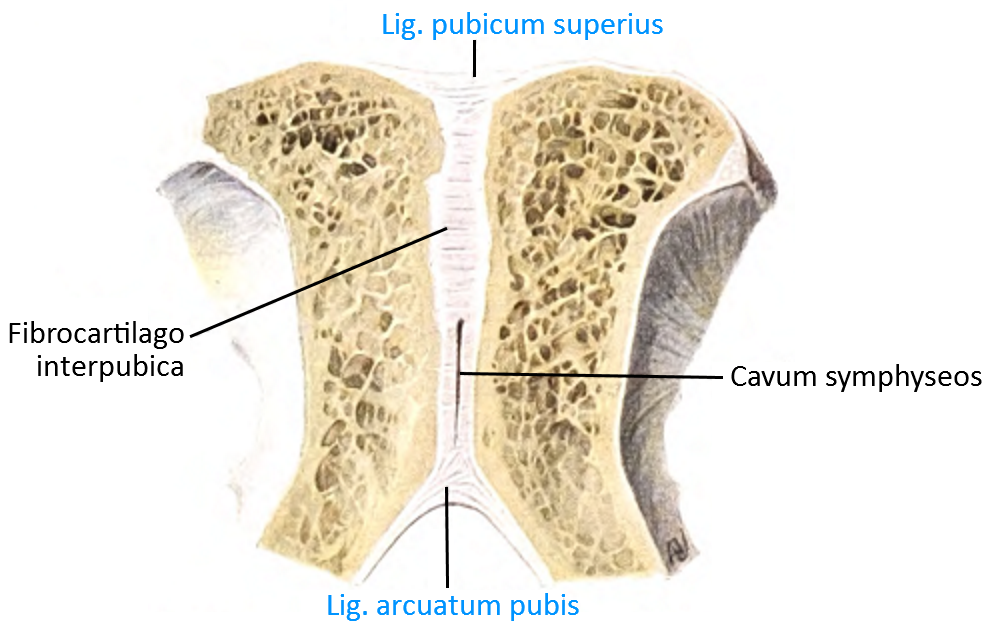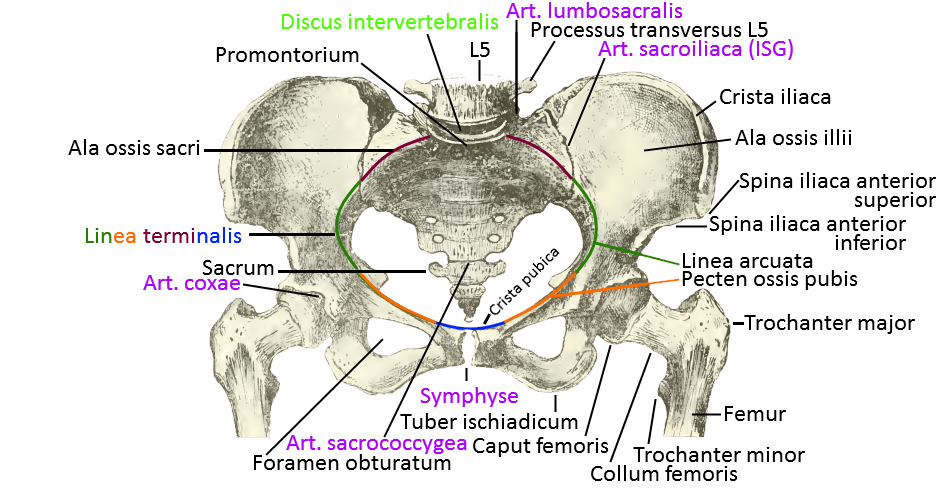yogabook / movement physiology / pelvis
Contents
Movement physiology: Pelvis
The pelvis is generally understood to be the space occupied by the
greater pelvis plus the lesser pelvis. The greater pelvis can be considered part of the abdominal cavity, as some important organs of the abdominal cavity extend seamlessly into the greater pelvis.
Female and male pelvis

The geometry of the female and male pelvis is clearly recognisably different, so that pathologists and archaeologists can usually identify the sex straight away. For example, the female pelvis is wider, less high, more anteriorly inclined and has a less elongated (longitudinally orientated) foramen obturatum.
Statics of the pelvis when standing (black) and sitting (red)

The pelvis is constructed like a barrel vault, which is prevented from drifting apart caudally when standing by the pubic bones and the symphysis in between. This reduces both the susceptibility to fracture and the possible imbalance of load in the SI joints. In this design, the symphysis is charged in traction when the patient is standing.
When seated, it is primarily the upper part of the ligamentous apparatus of the symphysis that holds the tensile stress caused by the resulting rotational moment (top outwards) of the pubic rami in combination with the bending stress of the hip bones.
The symphysis

lines

